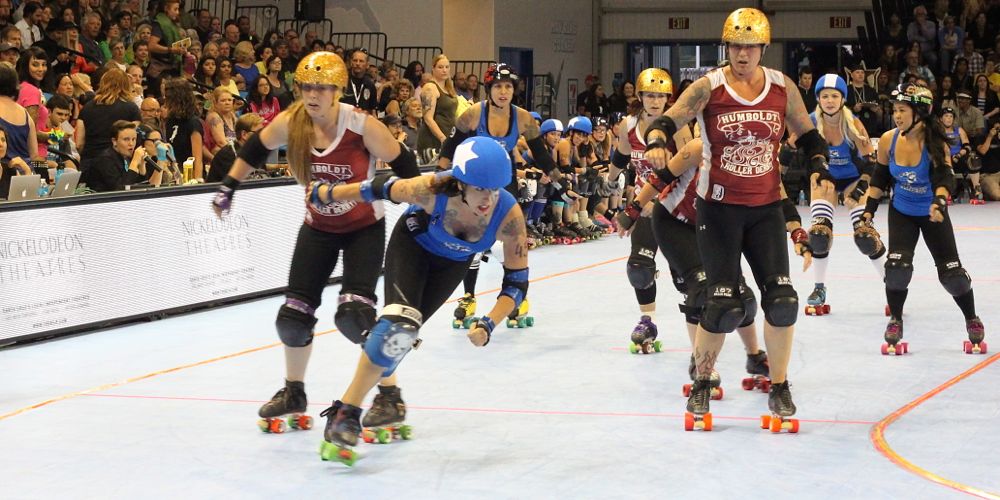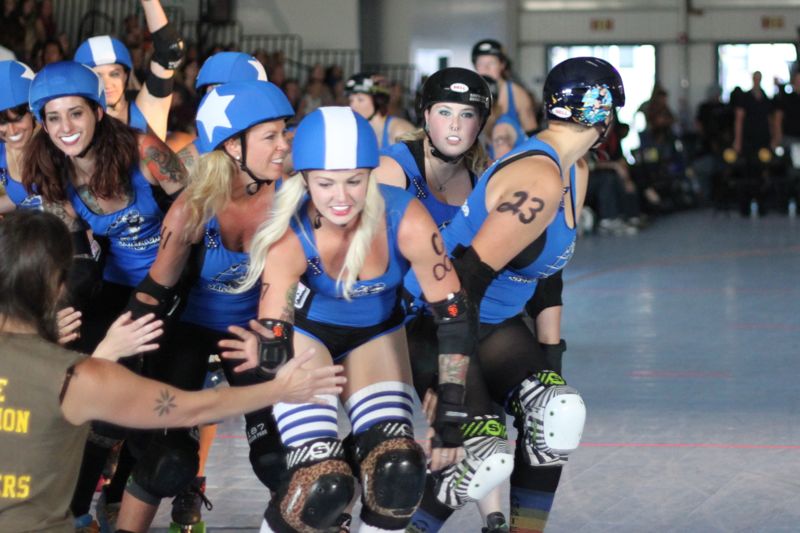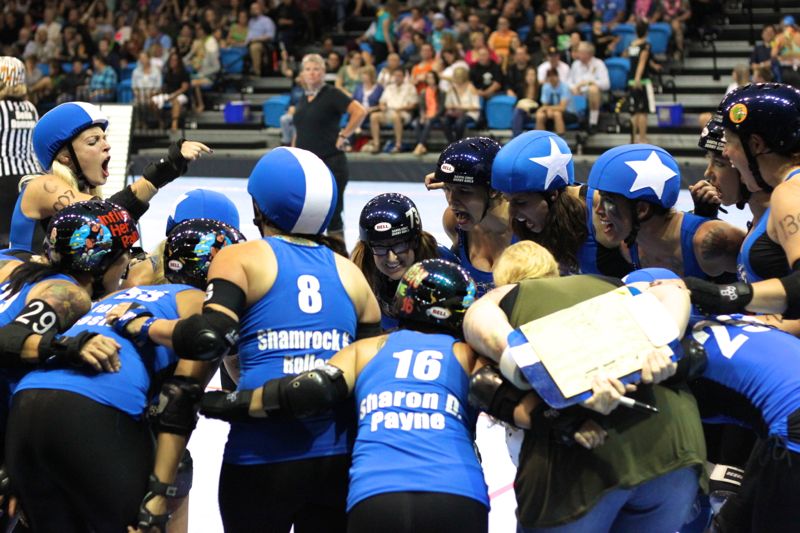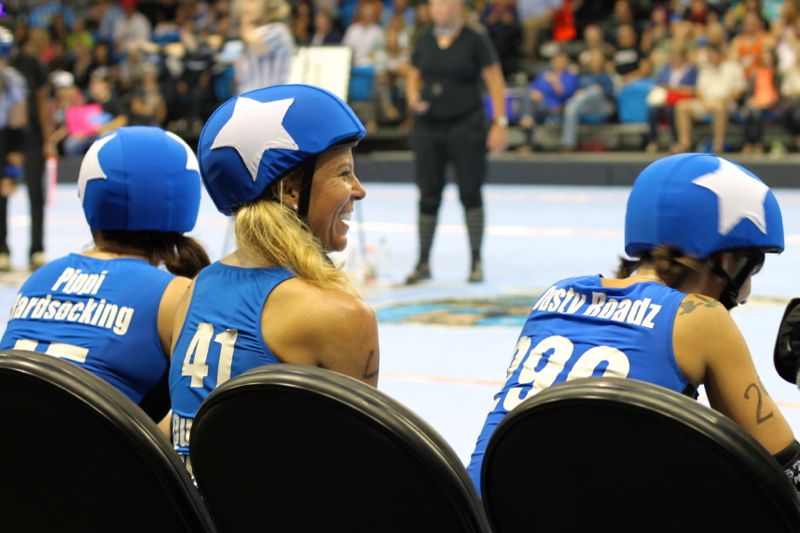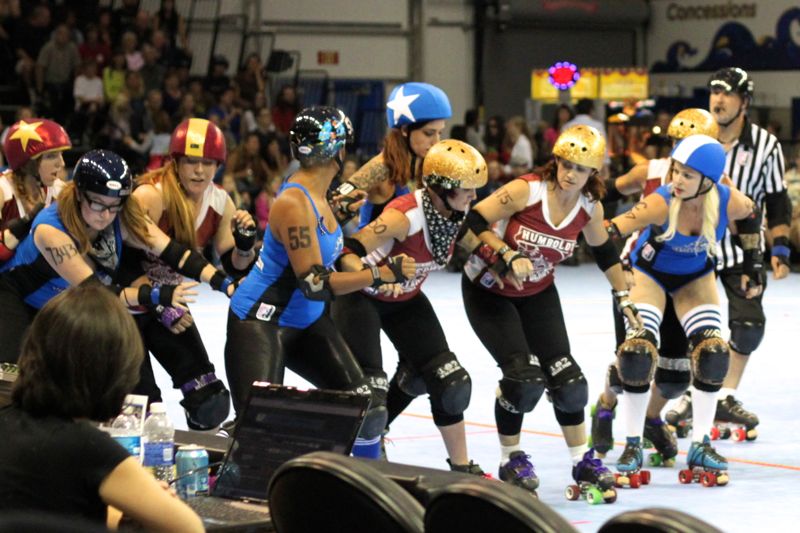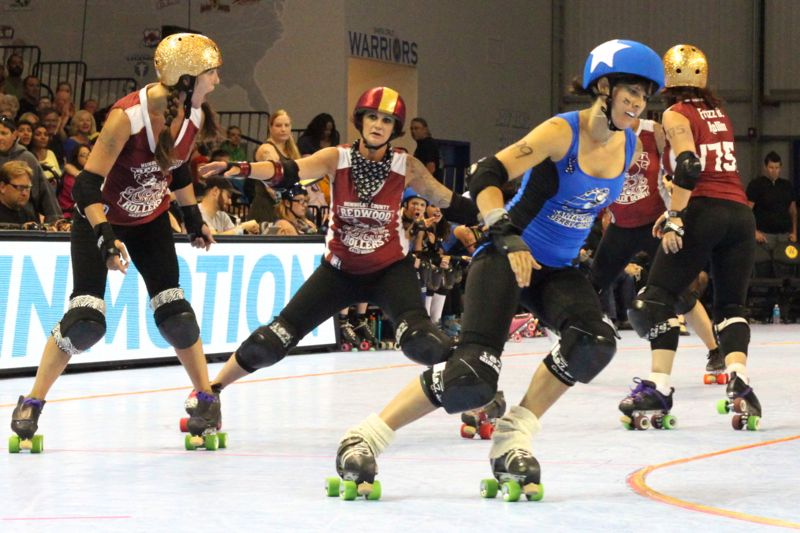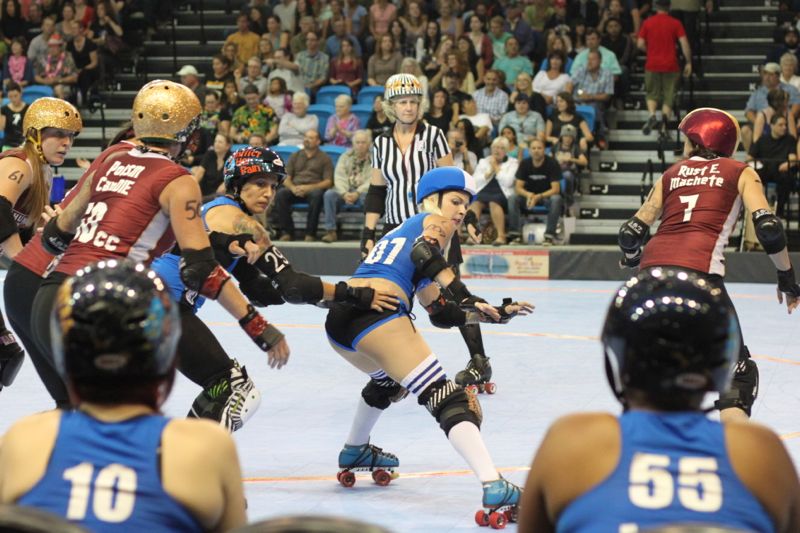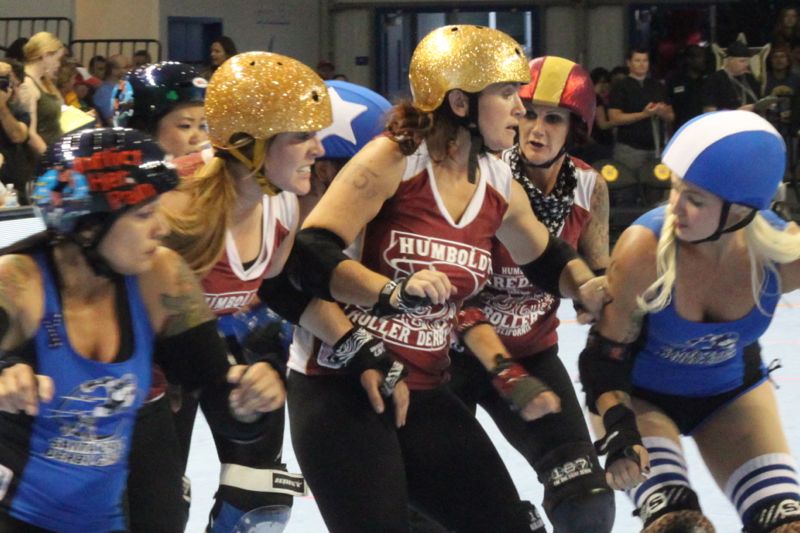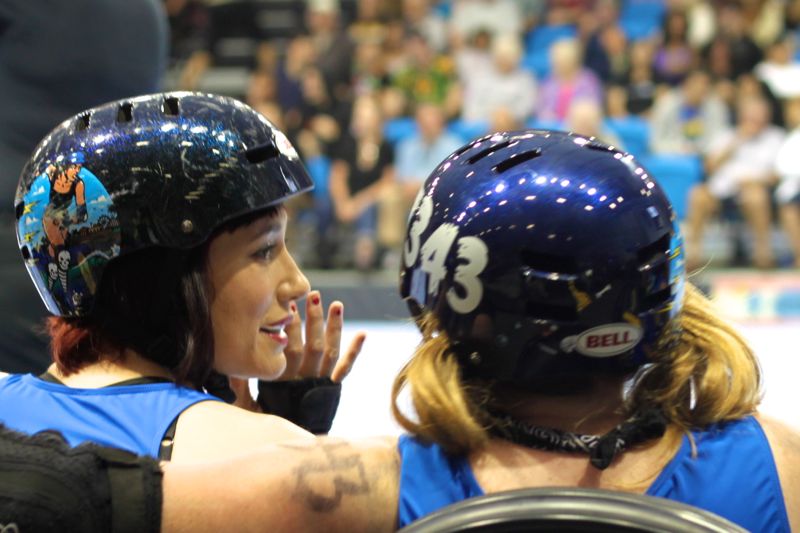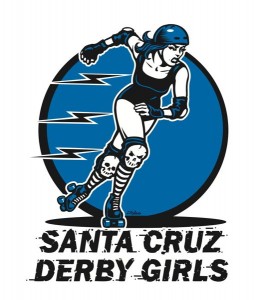Part Mardi Gras on wheels and part rockabilly hockey without the puck, women’s roller derby is the type of sexy, sporty, full-contact entertainment that fits Santa Cruz perfectly.
These are your Santa Cruz Derby Girls and they go by stage names like Pippi Hard Socking, Inflict Her Pain, Shamrock N. Roller, Liv N. Letdie, Sharon D. Payne and Bettie the Kid.
The names may be in good fun, but on the flat track, they’re all business. The action is real, the outcome matters and Santa Cruz loves every second of this hip-checking, thigh-bruising sport on skates.
Players wear a mouthpiece, helmet, as well as elbow, knee, and wrist pads, which only slightly absorb the inevitable crashes that occur in a full contact sport on quad skates. As you would expect, injuries are common for roller derby skaters.
The Derby Girls play by the official rules of flat track roller derby, a unified set of rules crafted by the sport’s governing body, the Women’s Flat Track Derby Association, which the Santa Cruz Derby Girls joined in 2010.
History of Roller Derby In Santa Cruz
Roller derby got its start in Santa Cruz in 2008 when a derby girl from Seattle’s Rat City Roller Girls organized the first local team. Since “Robin’ Yo Life” (Robin Hoff) helped start the Santa Cruz Rollergirls, roller derby has been warmly embraced by Santa Cruz with open, tattooed arms.
The Santa Cruz Derby Girls field several local teams: The Boardwalk Bombshells, Harbor Hellcats, Seabright Sirens, Skater Squad and Santa Cruz Derby Groms. The league’s strongest players join the Boardwalk Bombshells, Santa Cruz’s top local derby team that travels nationally to play opponents.
The Santa Cruz Derby Girls are a self-run 501(c)3 non-profit that help support the Santa Cruz community through volunteering their time and proceeds to local charities and philanthropic organizations.
Understanding the Rules of Roller Derby
For first time viewers, following the action during a roller derby bout can be confusing. Here’s a simple guide to how points are scored. (Note that the rules are fairly complex and this is a simple explanation).
Each team plays five skaters at once, one jammer and four blockers. The jammer for each team is designated by the star on her helmet and is the player that scores the points by passing or lapping players on the other team.
Points can rack up quickly depending on how many players, and how many times, a jammer can pass the skaters on the opposing team. Points are not tallied until a jammer makes an initial pass through all the blockers on the other team.
Blockers use positioning and body contact, usually with their hips and butts, to disrupt the opposing team’s jammer and create lanes for their own jammer to get through the pack. Blocks can only be thrown to the side or front of a skater.
What To Expect At A Roller Derby Bout
The beginnings of women’s roller derby were more theater than sport and it still retains an element of playfulness despite the increased focus on competition. There aren’t pillow fights in the penalty box, but you might catch a skater dancing during a timeout.
Derby bouts are very much a community centered and family oriented event, even if you can still buy beer, feel the bass of the sound system and yell at the referee.
The crowd at a Santa Cruz Derby Girls bout does not look a lot different than the skaters on the track. Dyed hair and tattoo-revealing tank tops can be seen equally from the bench to the bleachers. People from all walks of Santa Cruz life attend the bouts and there is strong local support for the Santa Cruz teams, especially the Boardwalk Bombshells.
Join us at the next game
Save 10% with promo code: SCLife19
